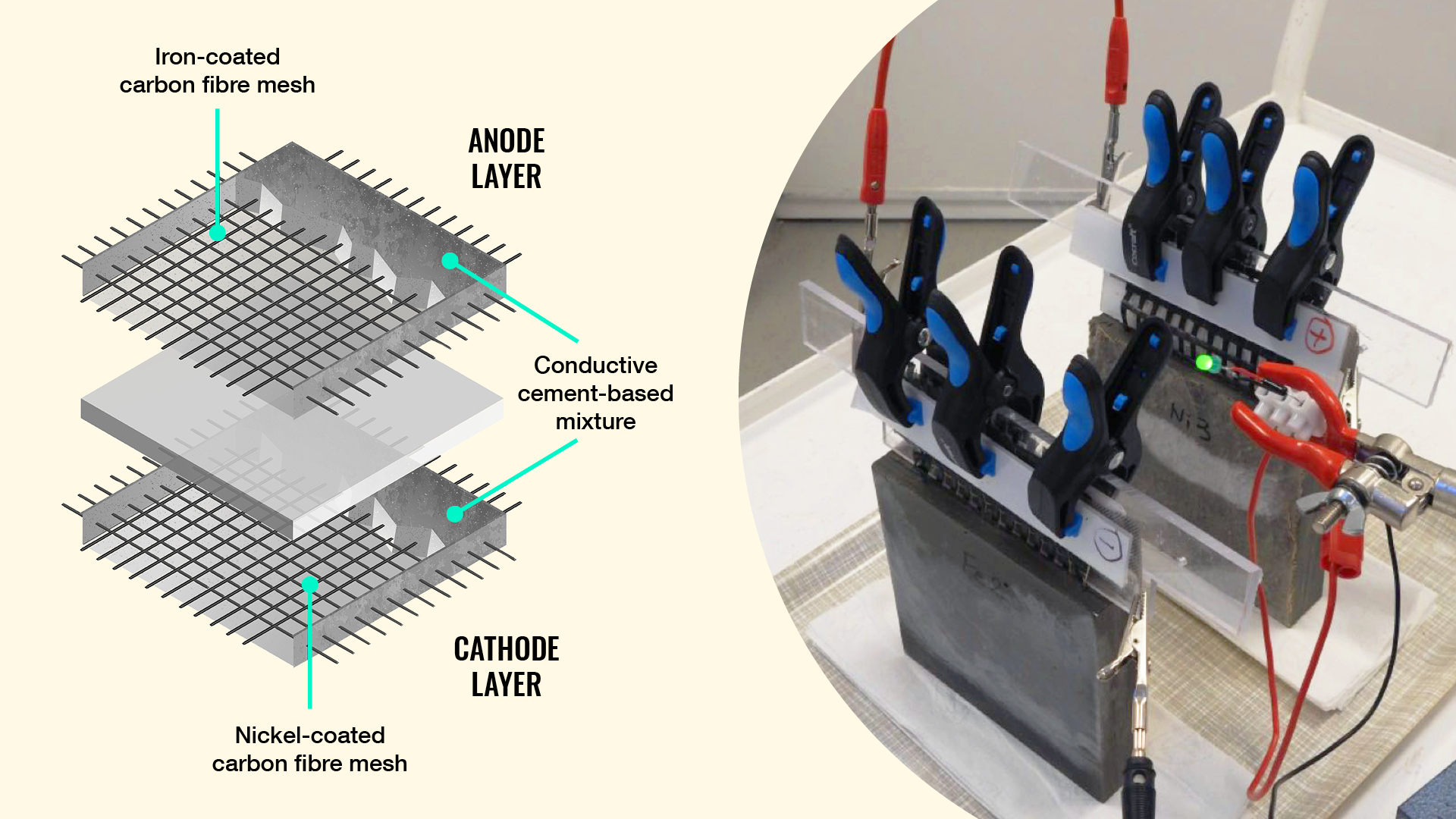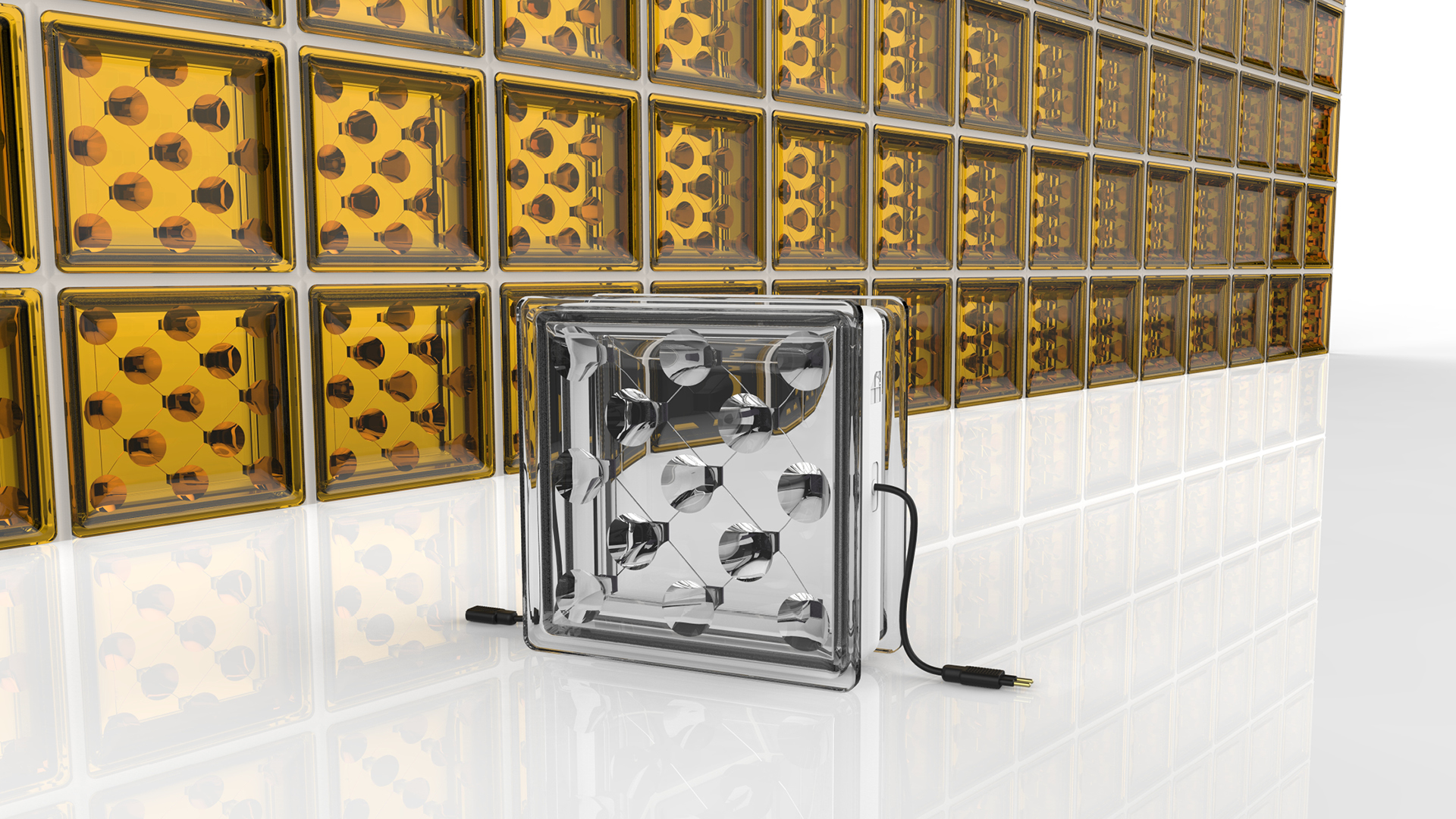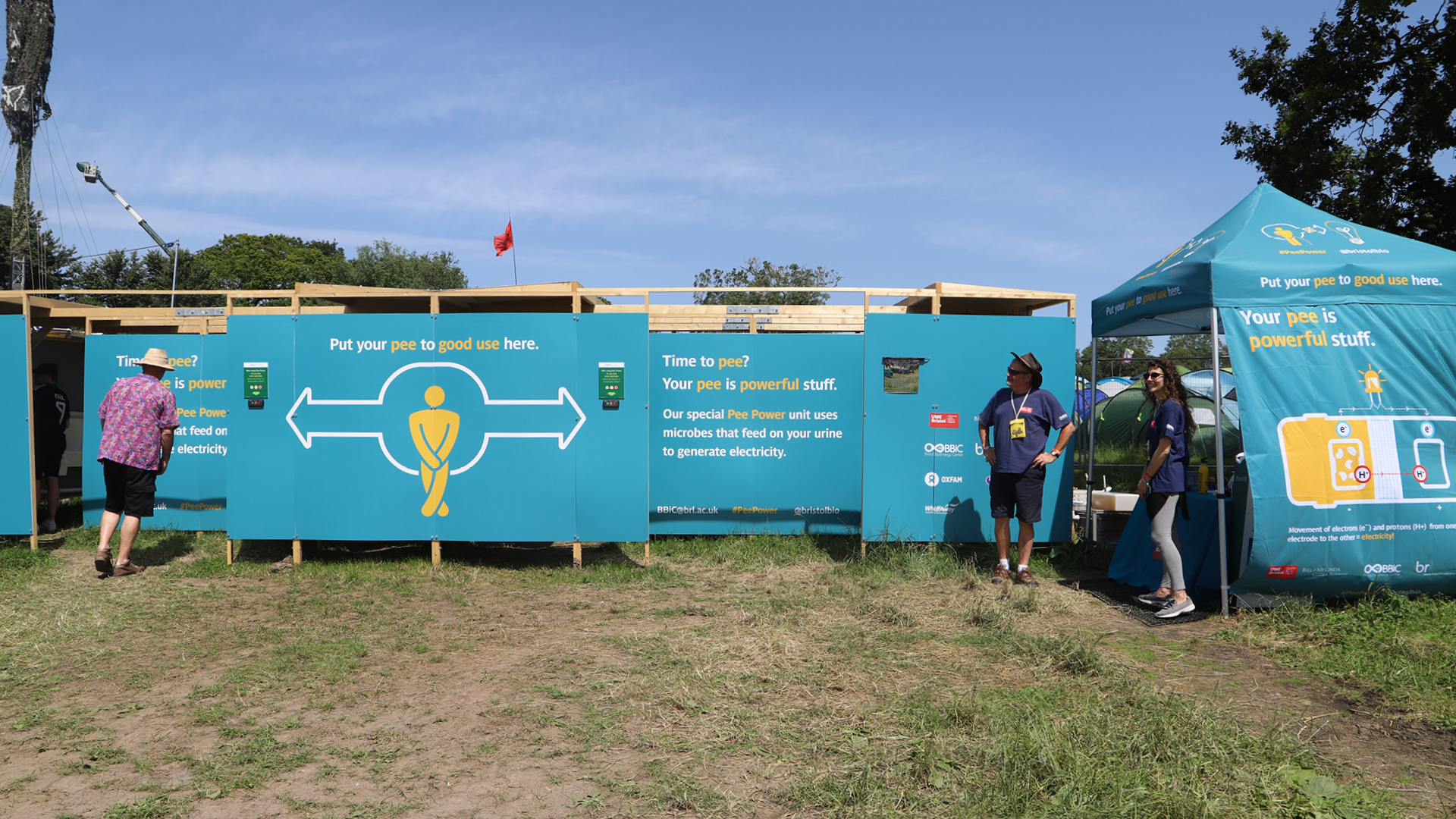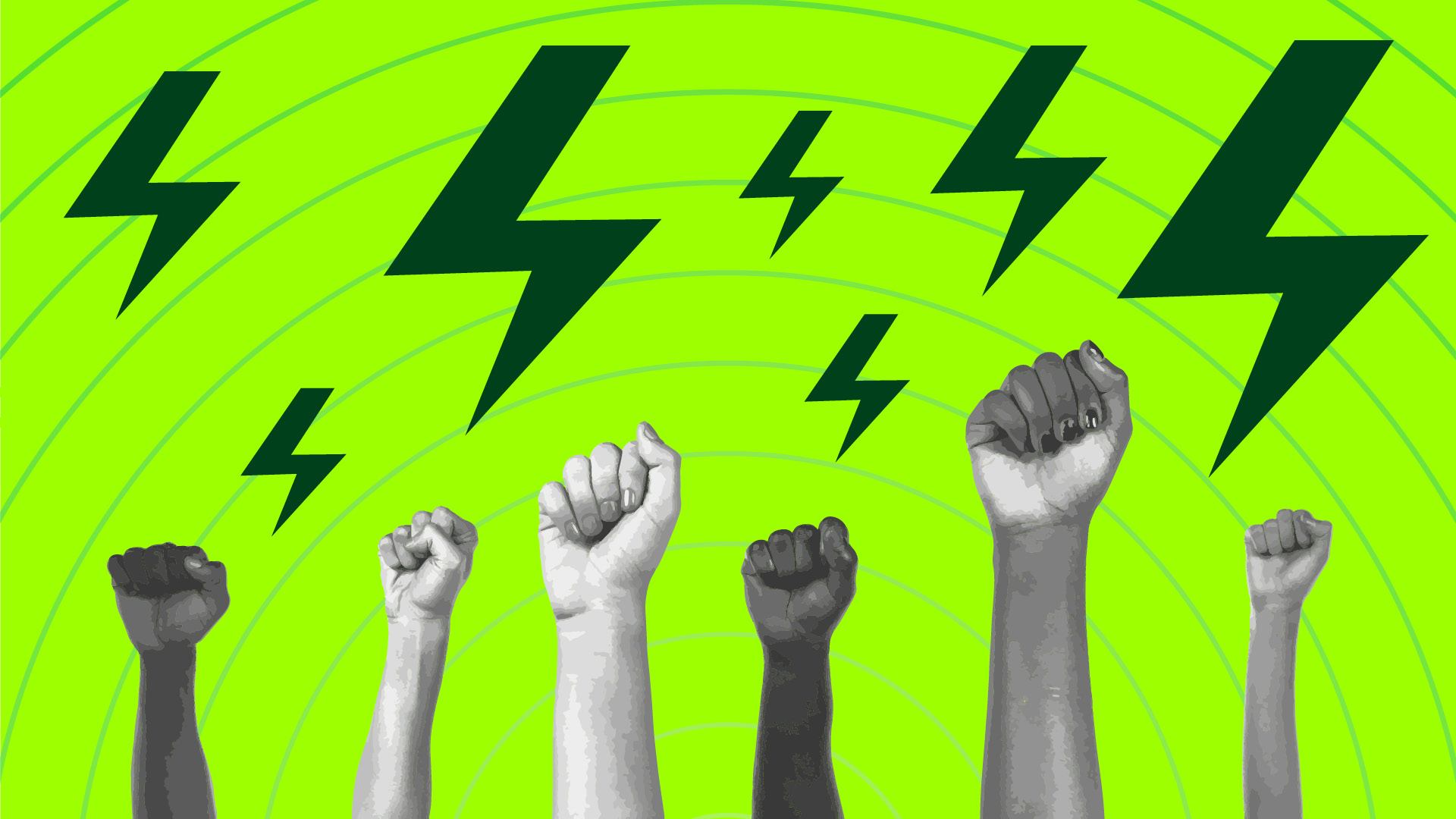
Illustration by Santi Zoraidez
Ever since the invention of fired clay bricks, some 6,000 years ago, external walls have served a very specific set of purposes: to provide strength and security, protect against the elements, ensure safety from fire and, ideally, give us something nice to look at.
Now an intrepid band of scientists and engineers is attempting to ‘push the envelope’ and add new functions to that list. They are developing construction materials that generate renewable energy, store power or even produce clean water for consumption by building occupants.
Innovations put through their paces in the lab include supercapacitor bricks and concrete batteries capable of storing rechargeable energy, solar-powered glass blocks, and microbial fuel cells that extract electricity from microscopic organisms in human waste.
The ability to create energy in the vertical plane, not just the horizontal, as with traditional rooftop solar panels, offers up a bigger surface area for power generation. Advocates of the technologies claim this could accelerate the global drive to decarbonise. Using walls as batteries, to charge electric vehicles or run devices in the home, could remove the space constraints, and safety risks associated with chemical batteries.
“Using the building fabric itself as a battery is an interesting concept,” says Chris Croly, building services engineering director at Building Design Partnership (BDP). “It's always interesting to designers to use materials for more than one purpose, so the ability to add another purpose to a wall is an attractive idea.”
But critics highlight the disappointing performance of lab-scale prototypes and, with the climate already facing a crisis, some question the relevance of unproven high-tech solutions when low carbon products and design options already exist.
Untapped potential
Building Integrated Photovoltaics (BIPV), which replace parts of the building with products like solar tiles, solar glass and thin film solar, are increasingly incorporated into new buildings as a principal or ancillary source of electrical power.
But the idea of adding similar functionality into structural walls is innovative. In the drive to hit net zero, energy storage infrastructure currently lags behind renewable energy production. If walls could capture energy during times of peak production and feed it back into the grid when it’s needed most, it could support a much more ambitious rollout.
A prototype rechargeable cement-based battery, developed by researchers at Chalmers University of Technology, has over 10 times the capacity of previous attempts at concrete batteries. In tests it was able to light a regular E14 LED bulb for around 90 minutes.

That’s small beans compared to commercial batteries, but if scaled up to a 1,600m2 facade on an eight-floor concrete apartment building, the walls could store around 11.2 kWh of electricity, say the researchers. That’s enough to provide energy for many low-power applications such as lighting, TVs and computer screens.
Other potential applications include a system to detect cracking or corrosion in highways or bridges, using stored energy from solar panels to run sensors embedded in the concrete.
The prototype electrode comprises a cement-based mixture containing small amounts of short carbon fibres, which increases conductivity and flexural toughness. A metal-coated carbon fibre mesh embedded within the mixture incorporates an iron anode and a nickel cathode.
The ambition is constrained by an uncertain path towards commercialisation. Luping Tang, professor at the Department of Architecture and Civil Engineering at Chalmers University of Technology, says: “The battery has some potential issues, such as service life, recycling methods and improvements to increase energy density.”
If ‘bricks and mortar’ could capture renewable energy from wind or solar it could charge electric cars or power devices in the home, potentially eradicating the need for chemical batteries or a grid connection.
Researchers at Washington University in St Louis have developed a supercapacitor brick, using a chemical process that converts the red pigment in common bricks into a plastic that conducts electricity. Power can come from anything that can apply a potential difference and bricks can recharge 10,000 times, on par with conventional supercapacitors.
However, energy density (storage capacity) is currently just 1% of lithium-ion batteries. In laboratory tests a brick lit up a regular 3W LED for 50 minutes. Performance could improve in future, claim researchers, either by boosting energy density (potentially adding semiconducting oxides or hydroxides of metals into the brick structure) or using more bricks to store more energy.
“The world needs a diversity of energy sources and storage techniques because currently there are very large fluctuations in renewable output,” says Edwin Wealend, head of research and innovation at engineering consultancy Cundall. “If it becomes possible to deploy some of these novel storage or generation technologies reliably and at scale, it could help flatten some of the peaks and troughs in renewable energy generation.”

Solar by stealth
Solar panels are efficient but their boxy appearance remains a turn off for many local residents and town planners. The ability to integrate clean energy generation into commonly used building materials could create power without compromising the local architectural vernacular.
This idea was key to the design of solar wall glass bricks, developed by University of Exeter spin-off company Build Solar. The square glass bricks look like traditional ones, but come fitted with a mini internal solar panel and an embedded optical device that magnifies light to increase the amount that’s converted into power.
A translucent effect shields against solar gain (which can lead to overheating) and modulates brightness levels inside the building.
A prototype wall measuring 1m2 can produce around 170-175W of electricity in direct sunlight, not significantly less than a standard solar panel at around 200-225W per metre square. Performance in a ‘communal space’ drops to around 100-125W.
Following recent trials of the technology, Network Rail and HS2 are considering the possibility of installing solar walls in station areas that require daylight and electricity. According to Build Solar, electric bike charging is one application being explored.
Walls don’t only need to harness sunlight to create electricity, filling them with hungry microorganisms can produce usable power too.

Pee power
The world’s first bio-reactive façade, able to generate renewable power and heat from algal biomass, was unveiled by design and engineering firm Arup back in 2013. Fast forward to 2021 and a microbial fuel cell (MFC) system is currently being developed by scientists at the University of the West (UWE) of England in Bristol. It uses dirty water, such as urine or household waste, as a food source to generate electricity with clean water produced as a by-product.
Each MFC ‘brick’ contains two compartments separated by a membrane. Microbes feed on dirty water on one side, sparking a chemical reaction that produces electrons. The electrons flow into the adjacent clean water compartment, in the process creating electricity.
A prototype version of the system, running on urine at Glastonbury Festival in 2019, generated a continuous three watts of power. The technology is being refined through a joint development agreement between UWE and Southeast Asian manufacturer Siam Cement Group, including the design of components to create a viable product.
The first customers will likely be remote households in sub-Saharan Africa, but given the ubiquity of human waste, researchers envision it being rolled out in homes, offices and hotels almost anywhere.
“This concept opens up the idea of ‘living buildings’ where you have different systems working together in complementary ways,” says Wealend. “For example, your toilets feed MFC, which provides energy for the house, while also cleaning the water, and providing composting for your vegetable garden.”
If implemented at scale, the positive downstream impact on water quality could have a bigger impact on carbon emissions than the renewable energy alone, he adds.
Stacking the odds
The benefits of building-integrated power are proven, but if these emerging technologies are to gain widespread use they must overcome several hurdles.
Most solutions remain in the concept stage, likely years away from widespread commercial use. “They are mostly quite immature tech, which means they are demonstrating potential and aren’t generating huge amounts of energy,” says BDP’s Croly.
Existing products for buildings, such as piezoelectric floor panels, which take a similar ‘little and often’ approach to energy generation, are often given as examples of greenwashing as they make very little impact on energy consumption in buildings.
Attracting significant investment for R&D may prove difficult in the global drive to reach net zero, says Croly, given that most investment is currently focused on the energy supply side, for example to fund bigger wind turbines.
There are also wider questions around the need to cut the embodied carbon of many energy-intensive building materials, including concrete and brick, and to ensure that new technologies are used to design buildings with a lower demand for energy.
Sarah Wilkinson FRICS, professor of sustainable property at the University of Technology Sydney, says: “There needs to be consideration of repair and reuse at the end of the lifecycle, in line with circular economy principles.”
The other ‘elephant in the room’ is human behaviour, she adds: “We still need to teach humans how to operate buildings efficiently, in the same way that people have to learn how to drive.”
"The world needs a diversity of energy sources and storage techniques because currently there are very large fluctuations in renewable output” Edwin Wealend, Cundall


